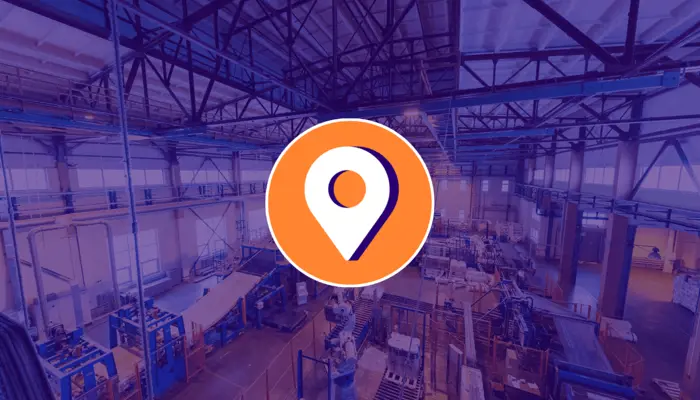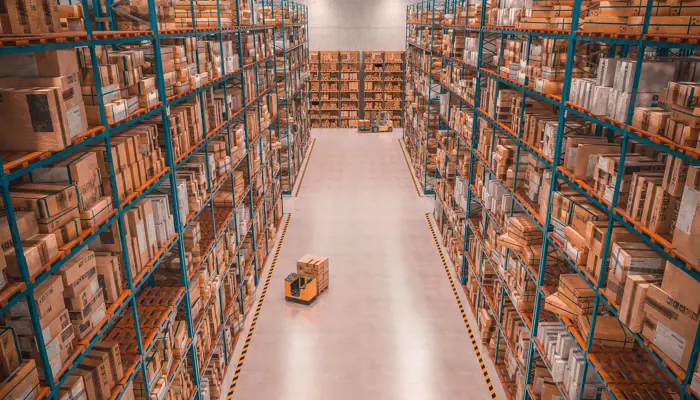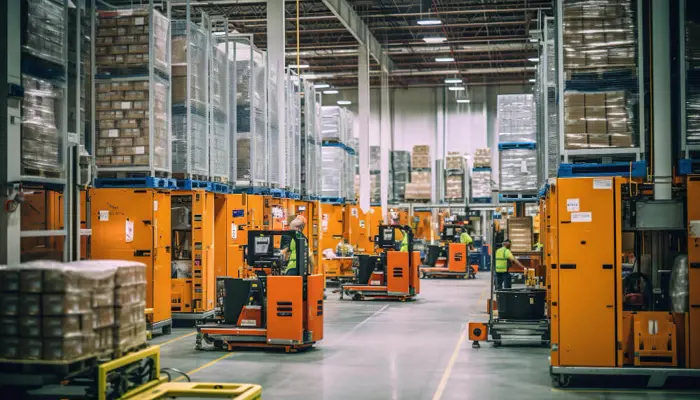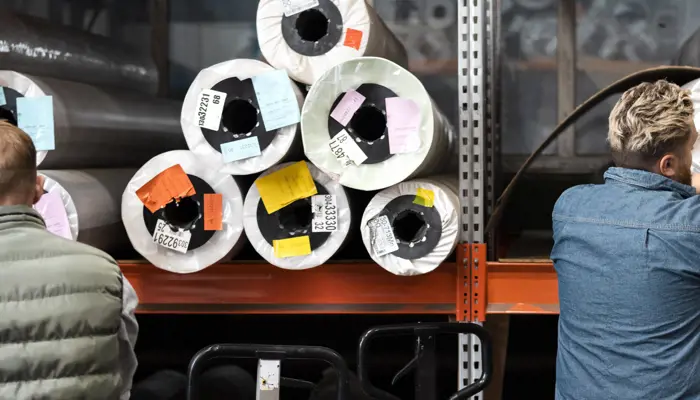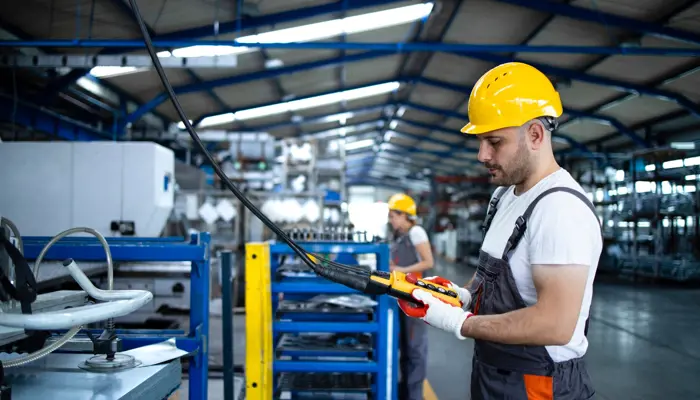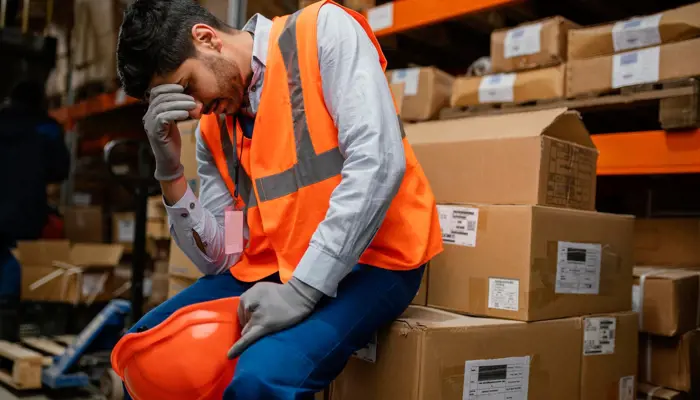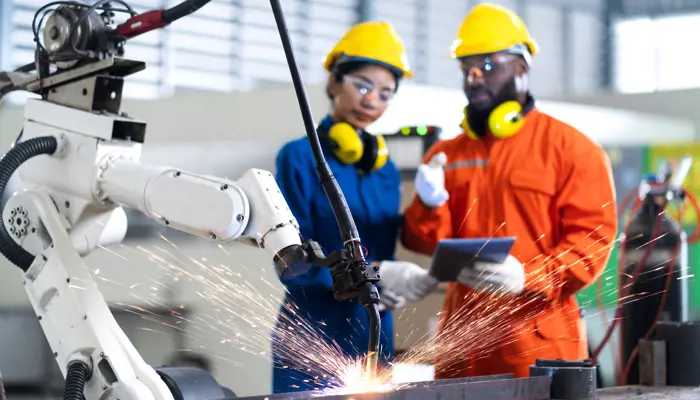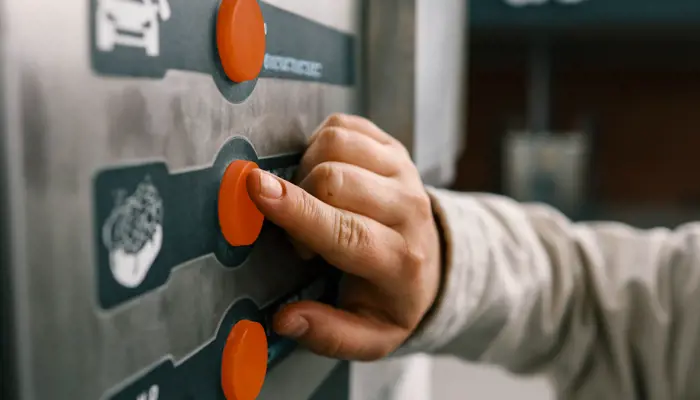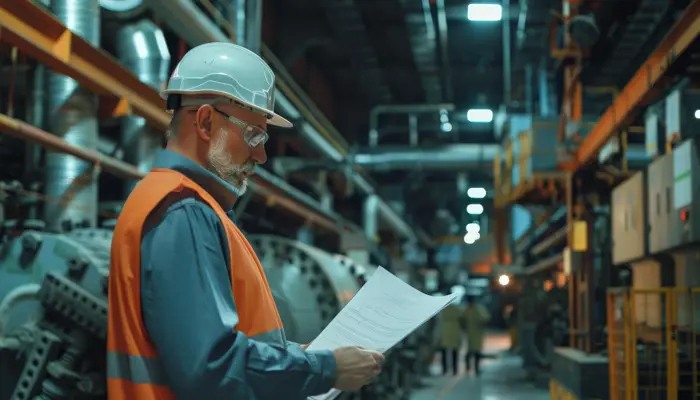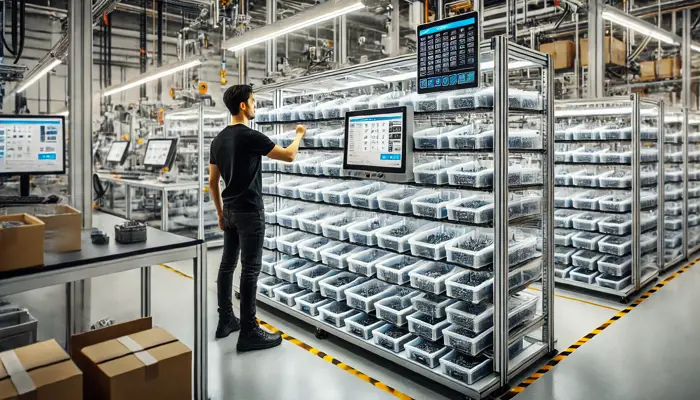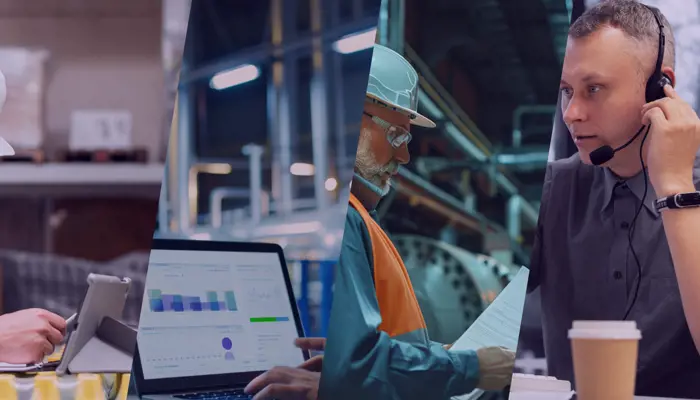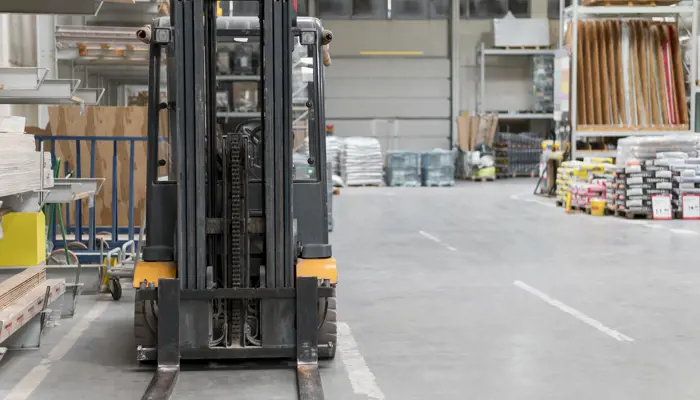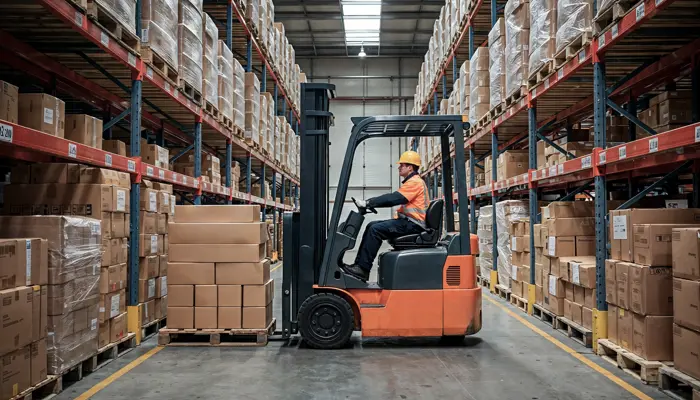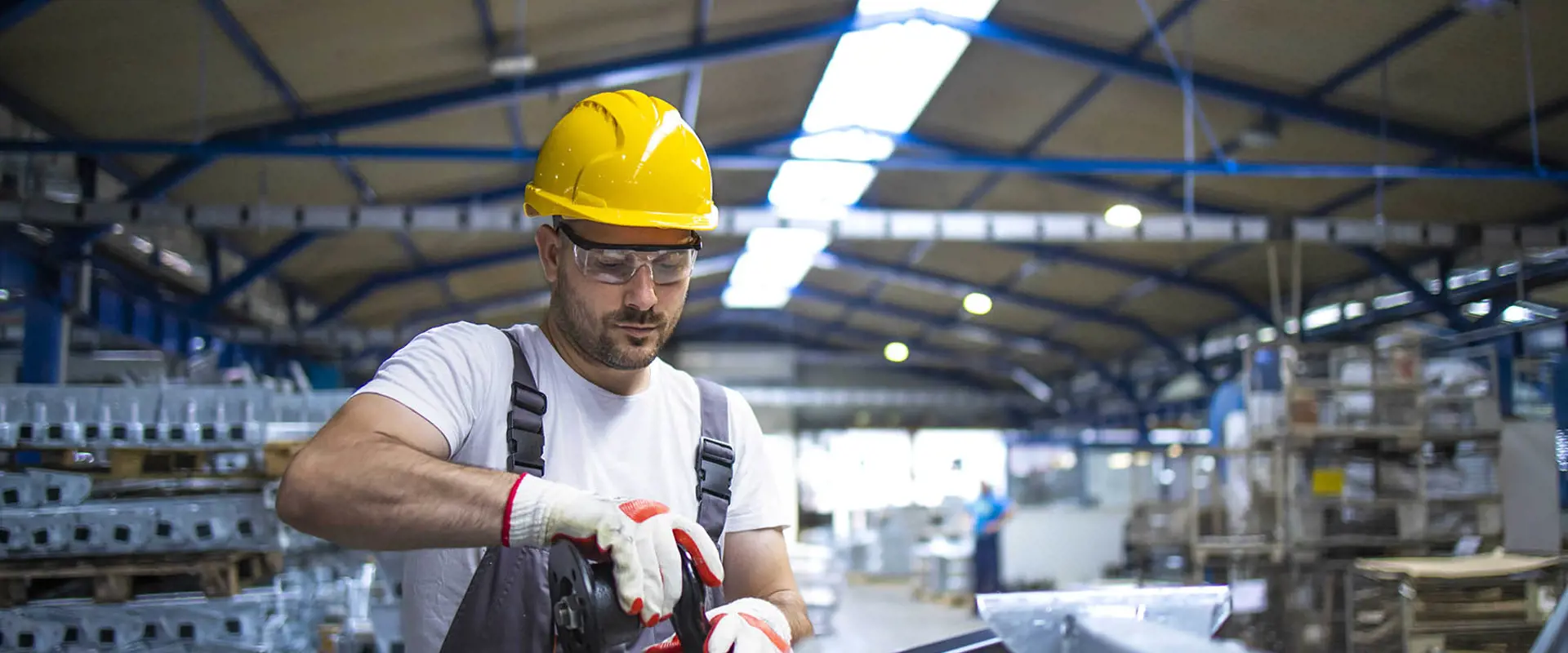
Preventing accedents at work with indoor location services
Workers’ safety is a frequently discussed topic, as the numbers of the accidents at work in the European Union are frightful. Indoor location services can give a valuable contribution to prevent accidents at work through many measures. Find out more.
- In 2019 3.1 million accidents at work in the European Union for which workers had to have at least 4 days of sick leave
- 1 fatal accidents every 920 accidents, with more than 3.000 dead workers in the European Union in 2019
- Real-time location systems and location services help to prevent workplace accidents, providing a safe environment for operators and reducing personnel costs to the company.
Worker safety is an increasingly discussed topic, as the numbers of workplace accidents speak for themselves-and they are frightening, to say the least! With indoor location services it is possible to prevent accidents at work, in particular in the manufacturing industry, where they happen frequently.
The statistics
According to a Eurostat report, in 2019 3.1 million accidents at work occured in the European Union, causing workers to stay home for at least 4 days. Of these, 3408 workers never came back home, because for them the accident at work was fatal. The proportion is 1 fatal accident every 920 non-fatal accidents.
These are terrible numbers, which make us reflect on how important it is to ensure a safe workplace and act promptly to deal with the problem. How?
The solution is not only to improve control over PPE and procedures, but also to invest in technologies.
Improving workplace safety with indoor location services
Indoor location services represent a valid contribution against workplace accidents, as they provide real time data on the position of both workers and anything moving within the facility, e.g. forklifts, raw material, semi-finished products and potentially dangerous working tools.
Through real-time location, it is indeed possible to act at the root of various problems. In particular, real-time location systems can be used also to ensure that workers wear the personal protection equipment (PPE) required based on different criteria, e.g. to access a specific area or use a certain tool or vehicle. When the worker approaches the object of restriction, they are promptly notified and reminded which PPE they should have.
Moreover, this type of services support the prevention of accidents caused by collisions between workers and moving vehicles. Indeed, both workers and vehicles as well as dangerous tools are tracked in real-time with alarms triggered in case the distance among them does not comply with safety criteria.
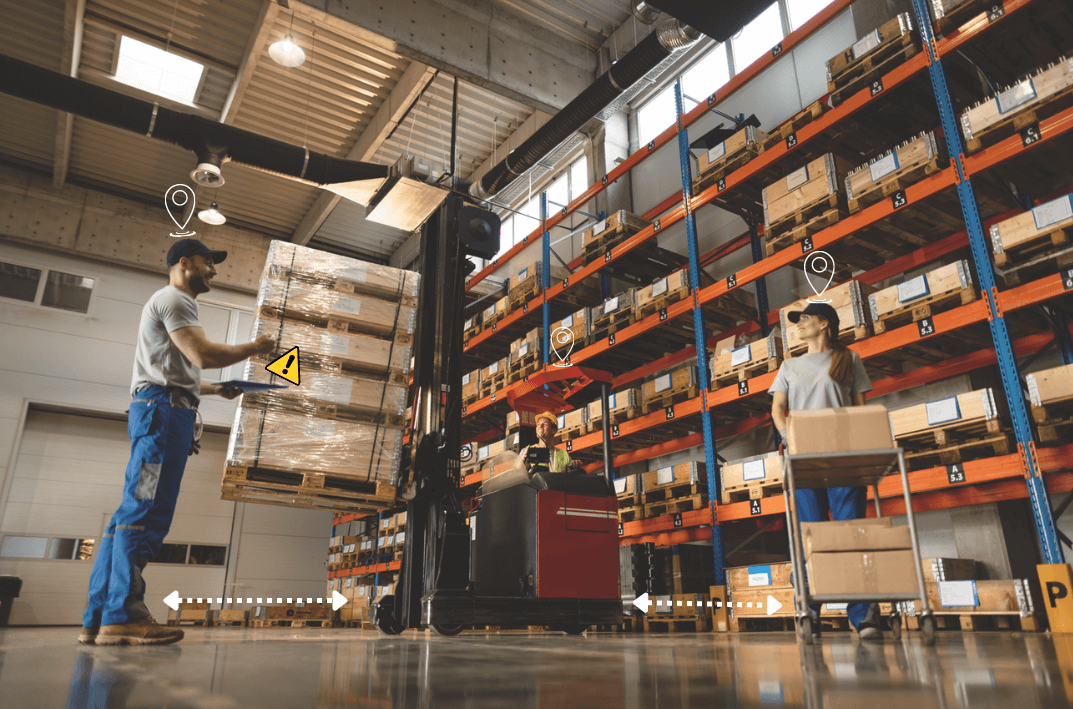
The assistance to lone workers is another way indoor location services can give a contribution in dangerous situations. Indeed, these systems are able to offer support to workers involved in accidents: if conscious, the operator can call for help by pressing a button, which is easily reachable, while if they are not, the device detects the workers’ position, e.g. through the “man down” function and automatically asks for help.
In addition, through specific alarms activated on totally customisable rules and criteria, workers as well as security managers can be notified if operators move close to dangerous areas or areas with restricted access.
Lastly, another safety measure is related to the COVID-19 pandemic. The real-time tracking of workers’ position as well as the historical data allow you to quickly find workers who have been in contact with other workers who resulted positive to COVID-19, to act promptly and limit the spread of the virus.
In conclusion, we have to remember that workplace safety has to be a priority in every company, as the workers have the right to work in a working environment in which risks are evaluated and kept under control thanks to the measure in place to limit them.

